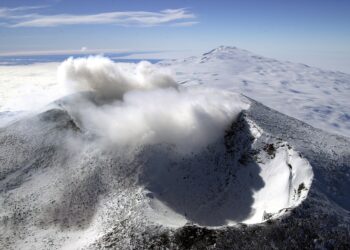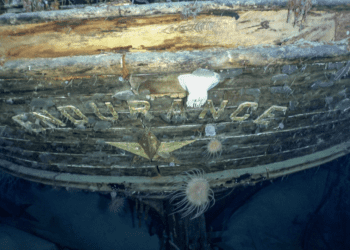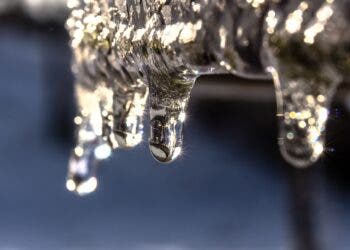
Beneath Antarctica’s colossal ice sheets, there’s a world that few people have ever seen until now. Well, technically speaking, no one has seen it, at least not with their own eyes. But with the aid of radar that can peer through miles of ice, researchers have unveiled this buried topography.
They found a system of complex valleys that used to host flowing rivers, says Guy Paxman, study author from Durham University.
“The landscape hidden beneath the East Antarctic Ice Sheet is one of the most mysterious not just on Earth, but on any terrestrial planet in the solar system. When we were examining the radar images of the sub-ice topography in this region, these remarkably flat surfaces started to pop out almost everywhere we looked.”
Antarctica’s history
The continents on our planet aren’t fixed; they move around, just really slowly. Antarctica is no exception.

Antarctica used to be a part of the supercontinent Gondwana, which also included South America, Africa, India, and Australia. During the Mesozoic time, when dinosaurs roamed the land, Antarctica was a temperate or even tropical place, with lush forests and massive ferns. It even had its own species of dinosaurs, as discovered by fossils.
Then, around 180 million years ago, during the Jurassic, Gondwana began its slow, colossal breakup. It didn’t happen all at once. In fact, the last separation of Antarctica only happened around 34 million years ago, with the continent breaking up from Australia and South America. Antarctica was isolated by a circumpolar current, which, along with overall cooling temperatures, turned it into the frozen continent we see.
So we knew Antarctica must have had some topography under all the ice; but actually seeing it is a different problem. This is where radar comes into play.
Ice-penetrating radar, which is not that different from the radar that maps airplanes, sends pulses from an antenna, often mounted on an aircraft, down to the sheet. Ice is largely “transparent” to this radar (particularly to lower wavelengths), which means the waves pass through the ice and get reflected back when they reach the underlying bedrock. They’re also reflected by different layers in ice, but in this study, researchers focused on the bedrock. By precisely measuring the time it takes for these echoes to return, and knowing the speed at which radio waves travel through ice, scientists can calculate the depth of the ice and construct a detailed, three-dimensional map of the hidden landscape below, much like how sonar maps the seafloor.
Why this matters a lot

The extensive flat surfaces were found beneath approximately 40% of the East Antarctic Ice Sheet’s 3,500km-long coastline
“The flat surfaces we have found have managed to survive relatively intact for over 30 million years, indicating that parts of the ice sheet have preserved rather than eroded the landscape,” says Paxman.
“Information such as the shape and geology of the newly mapped surfaces will help improve our understanding of how ice flows at the edge of East Antarctica.”
East Antarctica is the largest ice sheet on Earth. Alone, it holds enough frozen water to raise global sea levels by a whopping 52 meters. As our planet warms, understanding how this colossal ice sheet will behave is extremely important for coastal areas worldwide.
The scientists propose that these newly discovered flat surfaces act as natural barriers, currently regulating the speed at which ice flows towards the ocean. Professor Neil Ross of Newcastle University, a co-author, emphasized the significance: “We’ve long been intrigued and puzzled about fragments of evidence for ‘flat’ landscapes beneath the Antarctic ice sheets. This study brings the jigsaw pieces of data together, to reveal the big picture: how these ancient surfaces formed, their role in determining the present-day flow of the ice, and their possible influence on how the East Antarctic Ice Sheet will evolve in a warming world.”
Professor Neil Ross, Professor of Polar Science and Environmental Geophysics, Newcastle University, says this data offers an important clue to help understand Antarctic ice behavior. By incorporating the effects of these hidden river landscapes into advanced climate models, scientists can refine predictions of future ice loss from East Antarctica, offering a clearer picture of potential global sea level rise.
“We’ve long been intrigued and puzzled about fragments of evidence for ‘flat’ landscapes beneath the Antarctic ice sheets.
“This study brings the jigsaw pieces of data together, to reveal the big picture: how these ancient surfaces formed, their role in determining the present-day flow of the ice, and their possible influence on how the East Antarctic Ice Sheet will evolve in a warming world.”
Yet, the journey to exploring Antarctica is far from over. To truly unlock the timeline of these ancient riverbeds, scientists are now setting their sights on an even more ambitious task: drilling. This would involve drilling through miles of ice to retrieve rock samples and calibrate climate models even further.
The study was published in the journal Nature Geoscience.






